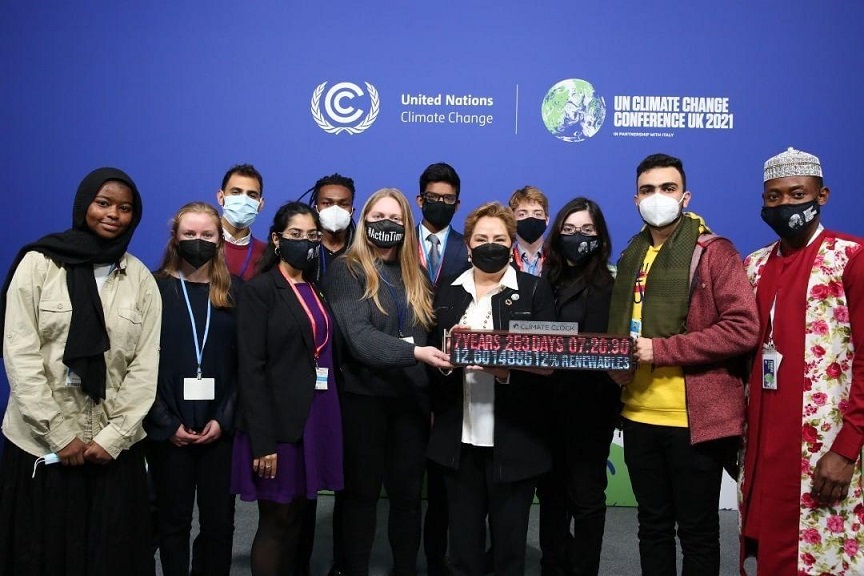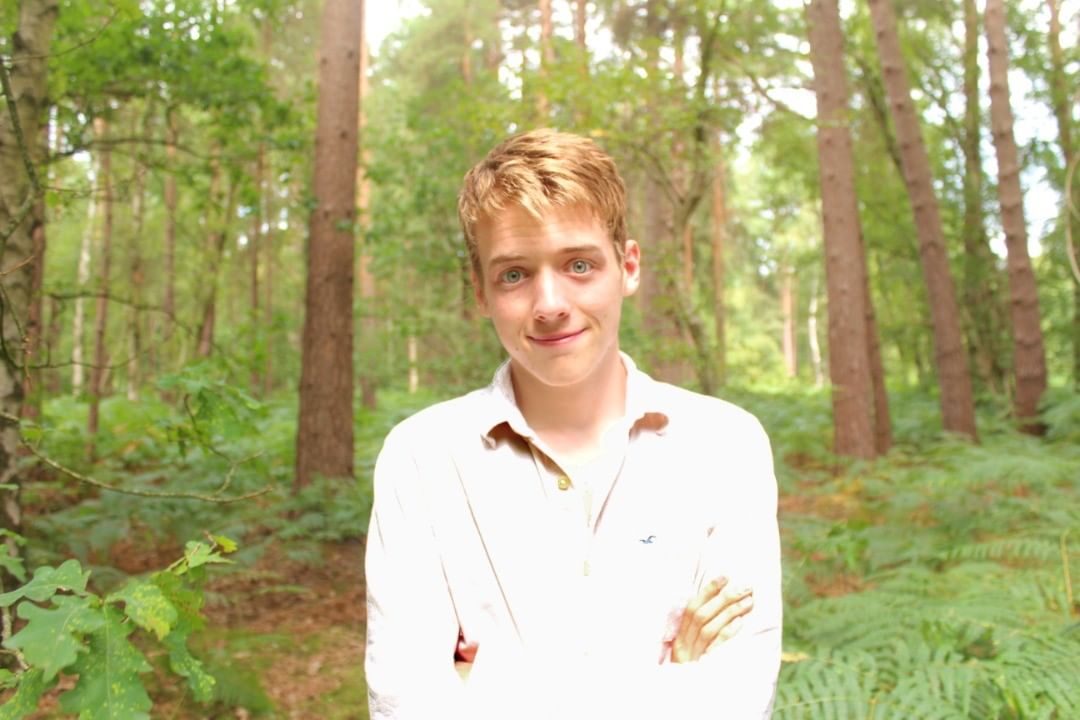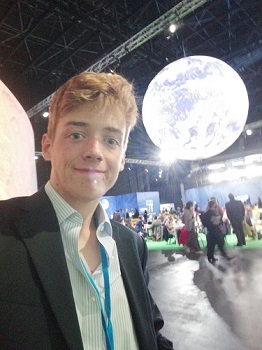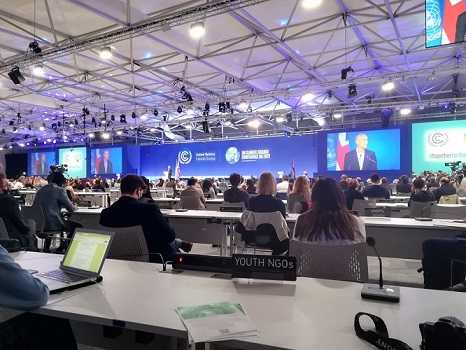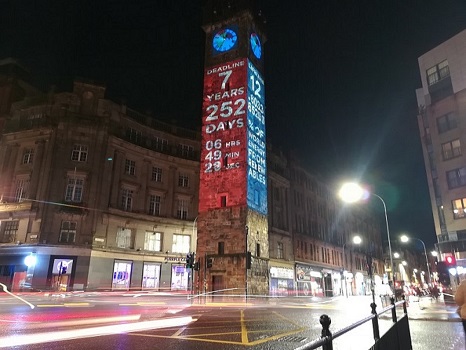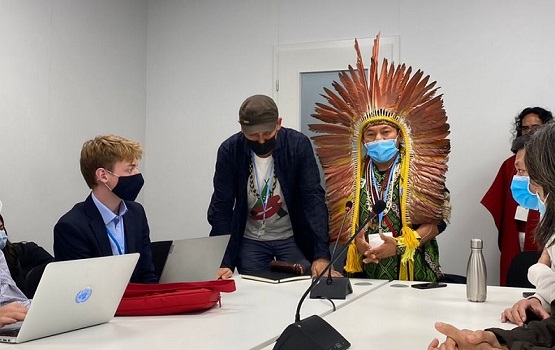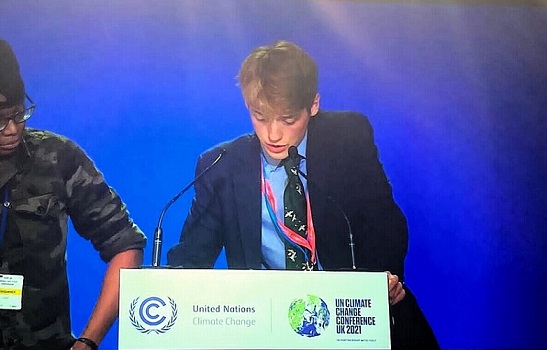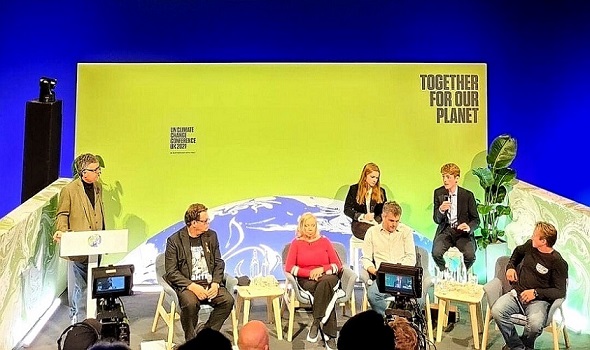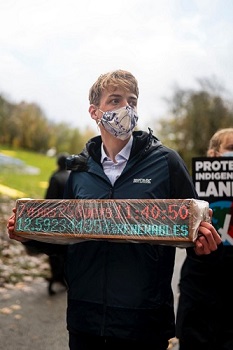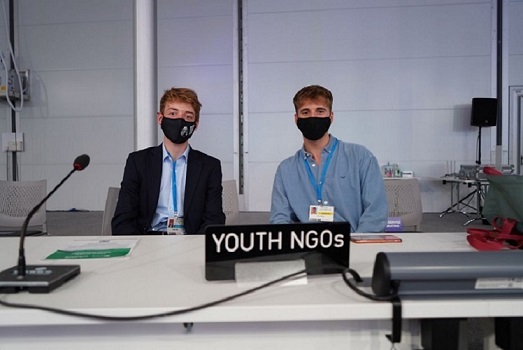December 2021 - James Miller (2020)
In October, James Miller became the first student to speak at a William Pitt Seminar, where he spoke eloquently about the youth environmental movement and what might come from their involvement and engagement with COP26. James participated in the UN Climate Summit in Glasgow as an observer delegate and, in the final blog of the year from our 25th Anniversary series focussed on climate rescue, presents his thoughts about the event, the outcome of the discussions, and how he remains cautiously optimistic that time has not yet run out to save our planet.
A month ago, one of the most anticipated political events of our time took place – the UN Climate Summit, COP26. I had been working towards the conference for almost two years, and so I was incredibly excited to be given the opportunity to attend it myself!
I was sent as an observer delegate, which enabled me to listen in on the negotiations, make interventions and hold meetings with parties to have my voice as a young person heard. In theory, at least. Despite the largest ever youth delegation of any COP being sent this year, the summit was blighted by some of the worst access issues in its history. Vaccine requirements and travel logistics were an insurmountable obstacle for many in the Global South. In the negotiating rooms, on most days, there were only nine seats for observers – to be shared between the thousands of us representing countries and organisations from all over the world. And even when we made it into the meeting rooms, we certainly weren’t at the table. Observers have no decision-making capability, but could only make our voices heard through certain channels and hope they are listened to. Young people in actual negotiator roles are few and far between.
This is, however, something that I hope is on course to change, thanks to the pressure of young people at COP this year. For the first time ever, the agreement text calls on countries to increase youth participation in decision-making processes at all levels, from local to multilateral. The text also invites future COP Presidencies to hold annual dialogues between parties and young people. Although this is a broad statement of intent with no guarantee of effective or widespread implementation, it is nevertheless an exciting achievement.
My primary concern at COP was always the headline goal of the summit: “keeping 1.5 alive”. This is a critical temperature threshold beyond which millions more people will suffer, and COP26 was widely seen as a final chance for leaders to claw it back within reach. To hold them accountable, I partnered with the organisation ‘Climate Clock’ earlier this year to install the Glasgow Climate Clock, a massive light projection that counts down the time we have left until we overrun our carbon budget for 1.5 degrees (and counts up the percentage of the world’s energy currently generated by renewable resources).
While this seven-storey tall monument lit up the city centre every night, we were concerned that the politicians in the Blue Zone would be blind to the messages of civil society on the outside and so we tried to get portable versions of the same clock into the delegate space itself. Unfortunately, that resulted in a lot of personal attention from UN security, and my attempts at humour to break the ice did not land well: my clock was confiscated as a potential bomb scare threat. A few days later we succeeded with proper endorsement from the head of UN security, as the clock had caught the eye of none other than Patricia Espinosa, Executive Secretary of the UNFCCC, and she wanted one for their headquarters in Germany! During its time in the COP venue it also generated a lot of interest from other delegates, so hopefully it had some subtle influence we will never know of.
I haven’t even scratched the surface of my time at COP26, but there’s one question that everyone seems to want to know the answer to – was it is a success? But much like the Paris Agreement, the success of COP26 is open to interpretation, and there are two conflicting narratives coming out of the conference. The first claims that the summit made outstanding progress and was a praiseworthy achievement, while the second sees it as a total failure and a demonstration of the inability of the COPs to serve their purpose. I think, to some extent, both are true.
COP26, and the political run-up to it, did make some remarkable leaps forward. One of the most significant outcomes, for example, was that projected warming was brought down from 2.1 degrees to 1.8 degrees if (and this is a massive if) all pledges are fully met. This is fast progress and definite cause for (cautious) optimism.
However, it’s still far from where we need to be, and time has all but run out to get on a 1.5 degree trajectory. A lot is being left very close to the wire. Not to mention disappointments in the watering down of language on fossil fuel phaseout, the absence of human rights language in key areas of the text, and especially in the failure of rich nations to deliver on climate finance to developing nations.
But I think it’s crucial that we don’t see these shortcomings, no matter how significant or repeated they may seem, as a reason to abandon hope in the crucially important UN process. As one of my fellow youth activists said to Alok Sharma at the summit – “We are trusting you not because we want to, but because we must”.
James Miller is a 20-year-old environmental activist, filmmaker and presenter, currently studying Natural Sciences at Pembroke College. He started making short films about climate and biodiversity at the age of 13, and since then his efforts to put these issues on the political agenda have taken him everywhere from Channel 4 News to the inside of 10 Downing Street. In the last year, he has coordinated several initiatives of his own, including an online concert featuring Olivia Rodrigo to raise money for conservation, and the installation of the Glasgow Climate Clock ahead of COP26.

